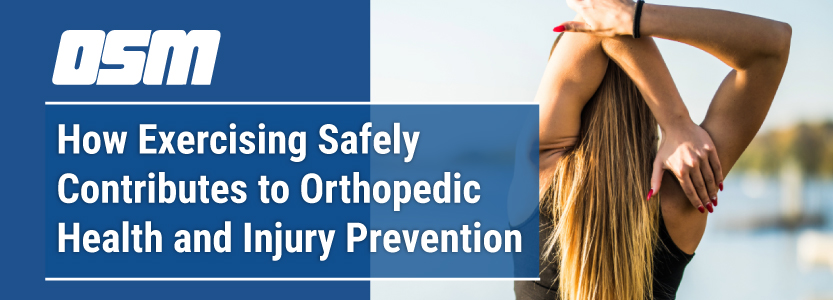Article featured on Movement Orthopedics
Engaging in regular physical activity is essential for building strong bones, muscles, and joints, contributing to overall orthopedic health. However, adopting unsafe exercise practices or neglecting proper technique can have adverse effects on your musculoskeletal system, potentially leading to injuries and hindering your orthopedic progress.
Understanding the importance of exercising safely and integrating injury prevention strategies into your workout routine can minimize the risk of setbacks and maximize your orthopedic health benefits.
In this comprehensive guide, we will explore the impact of exercise on orthopedic health, offer valuable tips and insights on exercising safely, and discuss various injury prevention strategies that can bolster your overall orthopedic wellness.
Whether you are an avid athlete or embarking on your fitness journey, understanding the connection between safe exercise practices and orthopedic health can serve as a foundation for injury prevention and support your long-term well-being.
The Impact of Exercise on Orthopedic Health
Regular exercise and physical activity have numerous benefits for orthopedic health, positively affecting various aspects of the musculoskeletal system, such as:
- Bone Density: Weight-bearing exercises promote bone formation, increase bone mineral density, and reduce the risk of osteoporosis and fractures later in life.
- Muscle Strength and Endurance: Different forms of exercise, including resistance training, enhance muscle strength, endurance, and overall functionality.
- Joint Mobility and Flexibility: Incorporating stretching and range-of-motion exercises into your routine can improve joint mobility, decrease stiffness, and boost overall flexibility.
- Injury Prevention: Exercise programs that emphasize stability, balance, and proper body mechanics can help prevent injuries and ensure long-term orthopedic wellness.
Safe Exercise: Tips and Strategies
Implementing safe exercise practices and techniques can greatly reduce the risk of injuries and enhance orthopedic health. Consider the following tips and strategies when engaging in physical activity:
- Warm Up and Cool Down: Warming up before exercise increases blood flow to your muscles and prepares your body for the increased demands of physical activity. Cooling down afterward helps gradually return your body to a state of rest, minimizing potential post-workout complications.
- Prioritize Proper Form and Technique: Ensuring proper exercise form and technique can prevent injuries caused by poor mechanics. Consult with a fitness expert or physical therapist to learn the correct execution of exercises and correct any imbalances.
- Listen to Your Body: Recognize your body’s limitations and adjust your workouts accordingly. If you experience pain or discomfort during exercise, stop and consult a professional to assess the cause and determine appropriate modifications.
- Progress Gradually: Avoid overloading your musculoskeletal system by gradually increasing exercise intensity, duration, and frequency. Incorporate rest days into your routine to give your body time to recover and adapt.
Injury Prevention Strategies
Adopt the following injury prevention strategies during your workouts to promote orthopedic health and safe exercise:
- Cross-Training: Mix up your workouts by including various types of activities, such as aerobic, strength, and flexibility exercises. Cross-training reduces the risk of overuse injuries and enhances overall fitness.
- Strengthen Stabilizing Muscles: Strengthening the muscles that support your joints, such as the core, hips, and rotator cuff muscles, can improve stability and provide better injury protection during exercise.
- Wear the Appropriate Gear: Choosing the right athletic shoes and protective equipment for your specific activity plays a significant role in injury prevention.
- Address Pre-existing Injuries: If you have a history of orthopedic issues, consult with a professional to address these concerns before engaging in new physical activities. They can provide guidance on appropriate exercise modifications and supportive measures, such as bracing or taping, to protect against further injury.
The Role of Physical Therapy in Exercise Safety
Physical therapists are experts in movement science and can play a critical role in ensuring exercise safety and injury prevention. They can assess your functional abilities, identify potential risk factors, and provide personalized exercise recommendations and guidance on proper form, technique, and progression. Partnering with a physical therapist can be an invaluable resource for individuals looking to enhance their orthopedic well-being and engage in safe, effective exercise practices.
Conclusion
Engaging in regular exercise is essential for maintaining your orthopedic health, yet it’s crucial to ensure your workouts are conducted safely and effectively. By understanding the impact of exercise on orthopedic health, implementing safe exercise strategies, and incorporating injury prevention techniques, you can enhance your musculoskeletal system’s well-being and reduce the risk of setbacks during your fitness journey. Don’t let pain or injury hold you back from your fitness goals.



